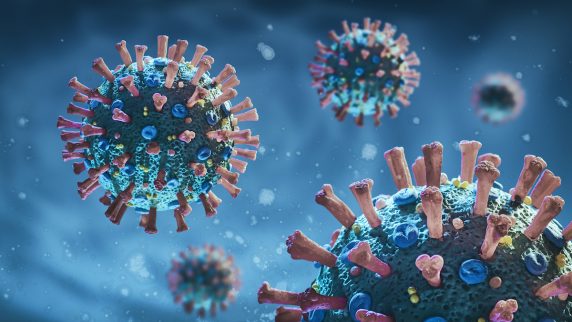Scientists still don’t understand why some people develop long COVID, and many aren’t yet in agreement over how to diagnose it. But canines are getting a leg up – or rather, four legs up – on the problem.
Two studies published in 2022 – one from France, one from Germany – show that dogs may be able to sniff out long COVID. Someday, that may prove important for patients who need help getting a diagnosis. For now, it offers potential insights into what may cause long COVID in the first place.
“People are actively working to find markers for COVID-19,” says Virginia Bieluch, MD, chief of Infectious Diseases at The Hospital of Central Connecticut. “With continued research, medical detection dogs could help point us toward some answers.”
How scent detection dogs work: Your immune response has a signature smell.
Research has shown that trained dogs can detect many kinds of human disease, from cancers to neurologic conditions like Parkinson’s. Yes, this already includes acute COVID-19: Since the start of the pandemic, dogs have been used to sweep some schools in Massachusetts for COVID-19 contamination. They’ve screened fans before Miami Heat games. They’ve been deployed at airports in Helsinki and Dubai.
How do they do it?
Diseases cause complex metabolic changes in our bodies, which can give off gas molecules called volatile organic compounds (VOCs). As it turns out, dogs can not only smell these compounds, but tell them apart. Some researchers think dogs might be able to directly smell viral proteins, too.
“When we say that dogs are trained to detect COVID-19, they’re really detecting your immune response,” explains Dr. Bieluch.
If that seems impossible, keep in mind that a dog’s sense of smell is anywhere between 10,000 and 100,000 times more sensitive than a human’s – and many times more sensitive than any mechanical device.
Medical detection dogs may help explain what causes long COVID.
Trained dogs seem able to detect acute COVID-19 about as well as a PCR test. But when it comes to long COVID, their accuracy has been harder to measure. Since there’s no equivalent to a PCR test for long COVID, researchers can only compare the dogs’ results to what patients say they’re experiencing.
Still, the recent long COVID studies are getting attention. In the France study, trained dogs detected signs of virus in 52 percent of patients who self-reported with long COVID symptoms – as far out as a year and a half after an acute infection. Dogs in the smaller study from Germany detected signs of long COVID in 93 percent of patients who reported symptoms.
The causes of long COVID are still largely a mystery, but the canine studies shed light on how researchers are thinking about it. One theory is that the SARS-CoV-2 virus stays put in some people’s bodies, continuing to replicate and create health issues. Both groups of researchers guessed that the dogs are detecting the same VOCs for acute COVID-19 and long COVID, which could support that theory.
What’s next for long COVID and canine research?
Both studies acknowledged the need for larger sample sizes and continued research. In the meantime, questions remain, particularly when it comes to understanding the wide range of symptoms linked to long COVID.
For instance, will medical detection dogs be better or worse at detecting long COVID if a person reports a certain type of symptom – say, lingering heart problems or respiratory issues versus fatigue? Will there be a noticeable difference in the dogs’ performance across certain categories? If there is, what does that tell scientists about how to narrow or expand long COVID’s diagnosis?
On these matters, the researchers haven’t ventured any guesses just yet. The dogs aren’t talking either.



